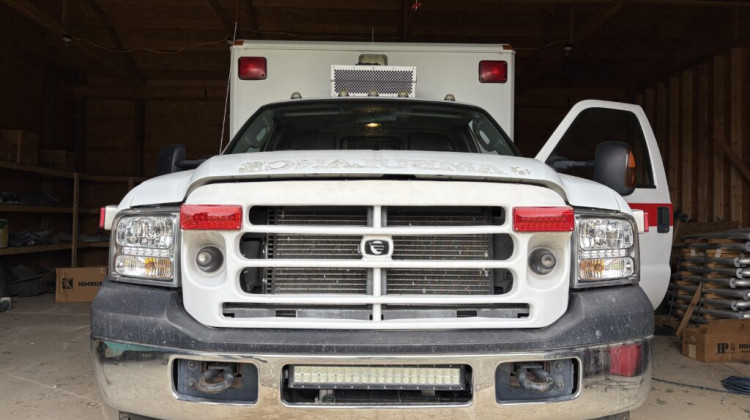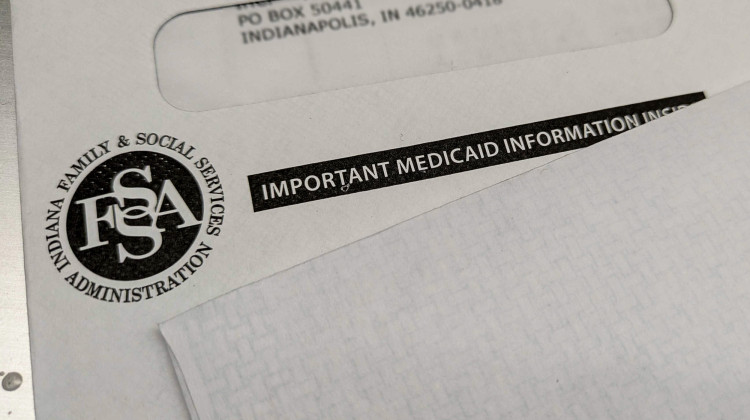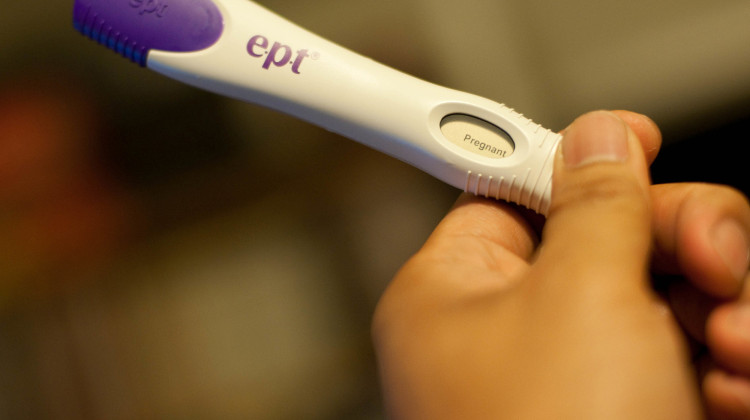Experts say contact tracing is key to understanding and managing the ongoing COVID-19 pandemic, and many community members have questions about the process. Side Effects received dozens of those questions through our partnership with Indiana Public Broadcasting.
To answer them, community engagement specialist Brittani Howell spoke with Ross Silverman, a health policy and law professor at Indiana University; Madison Weintraut, case investigation team lead with the Marion County Health Department; and Elizabeth Gray, research scientist and lecturer at George Washington University. The contract tracing discussion was live-streamed on Facebook. It is summarized below.
First off: What is contact tracing and how does it work?
Contact tracing is a method of tracking infectious diseases that spread from person to person, and it has been used in public health for a long time, Weintraut said. In the case of COVID-19, it’s identifying people who have tested positive for the virus and determining who they may have transmitted the virus to. Tracers are most concerned with the case’s close contacts: People who have been within six feet of the active case for 15 minutes or longer.
In Indiana, it works like this: A person gets tested for COVID-19 at a local testing site. The local health department sends the test result to the Indiana State Department of Health. If the test is positive, the result goes to contact tracers at the state’s call center, which the state implemented in mid-May through a $43 million contract with Maximus, a private health and human services provider.
Contact tracers will then reach out to the individual who tested positive for the virus. If you receive a text message from 877-548-3444, it’s important to answer it, Weintraut said.
“You'll get a text message and it says, ‘Hey, please call the call center at this number, which is 833-670-0067.’ Call that number,” she said. “If you don't call it, we're going to be calling you.”
Once they get in touch, the contact tracer and the person who tested positive will have a conversation to determine their close contacts. The tracer will get as many details as they can including where the individual has been lately, including work, church, school and social gatherings. The tracer will ask for the contact information of anyone the person may have exposed to the virus.
The tracer will then reach out to those contacts, alert them to their possible exposure, and advise them to quarantine.
“With quarantine, we're looking at the close contacts for more of a watch and wait type situation. So they also are going to withdraw from the public. They're not going to go physically into work or school. And they're going to monitor themselves for symptoms and most importantly, taking their temperature twice a day and watching out for that shortness of breath, cough and other symptoms,” Weintraut said.
The phone call with a contact tracer can also be an opportunity, Silverman said.
“It's an opportunity to do education about what COVID looks like, as well as about the kinds of services that might also be available to help you through the quarantine or the isolation process. And so it can be an opportunity to connect you up with additional services,” Silverman said.
However, if there aren’t enough contact tracers, there may not be enough time for the contact tracers to deliver that educational piece.
What is Indiana’s capacity for contact tracing?
The recommended number of contact tracers for the US ranges from 100,000 to 300,000. However, Weintraut said, “The one I really seem to have the most faith in is about 30 per 100,000 population.”
For Indiana, that translates to about 2,000 contact tracers. In a recent press conference, state health commissioner Dr. Kristina Box said Indiana has 650 contact tracers, and that number is "dramatically" higher if you also count public health nurses doing contact tracing work.
The Marion County Health Department does not currently have the number of contact tracers Weintraut would like to have on hand. On a good day, a contact tracer can reach about six individuals, Weintraut estimated.
“I use the analogy, I feel like I'm on the Titanic and I'm in a room where the water is rising, but there's still air, and I'm kind of breathing the air at the top of the room,” she said. “Not drowning yet, but it's okay. It's still a struggle.”
There’s some relief on the horizon: The county health department has entered a collaboration with the Indiana University Fairbanks School of Public Health at IUPUI, which will hire more than 300 contact tracers by Dec. 31.
Contact tracing relies on getting complete information from individuals who have tested positive or have been exposed to the virus. But as many as half of the files in the state’s contact tracing database are missing vital information, according to reporting by WFIU.
The other problem facing contact tracers is testing delays. The longer a person goes between being tested and receiving their result, the more people they may unintentionally infect as they go about their business. It also leaves less time to catch the positive individual’s close contacts before they become contagious and spread the virus to others.
“This is all a chain system,” Silverman said. “So that the faster we can get people tested, the faster we can get them their test results, the faster they can be contacted, the faster they can be isolated and supported. And the faster the contacts can be reached and supported as well.”
“You really need to get those test results turned around within 24 to 48 hours for it to be effective,” Weintraut said.
It's hard to know exactly how well states are doing in their contact tracing efforts, because most states are not regularly reporting that information. New York, Oregon, and Washington, DC are exceptions.
How is the information gathered by contact tracers protected? What about HIPAA?
There are several regulations that protect the information passed from an individual to a health department to a contact tracer. In this particular case, the Health Insurance Portability and Accountability Act (HIPAA) is not one of them.
“Even if you have a public health entity that is in fact subject to the HIPAA rules, gathering your health information and then sharing it accordingly for purposes of public health, tracking, treatment, payment, anything like that, that would be completely permitted under HIPAA. There's no violation within that at all,” Gray said.
Each state has its own laws that govern public health and infectious disease control. Like many other states, Indiana’s law puts a blanket confidentiality or privacy protection around the information, Silverman said.
“The public health agencies, when they are collecting information, should only be collecting the minimum information necessary in order to address the issue that they're dealing with. They're not going to be too expansive in digging into your life in order to try to gather information,” Silverman said. “And if a person violates the privacy laws, they can be prosecuted criminally.”
If a state hires a private vendor to conduct contact tracing, that vendor is also held to the same privacy standards. “The expectation is going to be that they are essentially treating this information the same way that the state would treat the information,” Silverman said.
What about contact tracing apps?
A recent update for Apple products includes an exposure notifications system that can be used for contact tracing. However, an individual must install and activate a contact-tracing app before the app can do anything.
For people without iPhones or Apple products, other contact tracing apps exist. But unless there’s widespread participation in a given population, those apps aren’t much help to health departments. And as with any app, it’s a good idea to read the terms and conditions before you give an app access to sensitive data.
How can I become a contact tracer?
Several entities are hiring contact tracers, from health departments to universities. Keep an eye out for job postings like this one from Indiana University, which is looking to hire 300 contact tracers before Dec. 31.
Every employer is different, but in general, a medical background or lab experience of some kind is desired for contact tracing work. However, if you don’t have that background, don’t count yourself out. There are other skills that make applicants good candidates for contact tracing positions.
“If you’re a really good Facebook sleuth, then you might do well as a contact tracer,” Weintraut said. Telemarketing experience can also be valuable. “Being able to have a good phone presence also helps to be able to get people to open up and feel comfortable talking to you.”
People with proficiency in multiple languages are especially encouraged to reply. “Here in Indianapolis, we could definitely use Spanish and Burmese in particular,” Weintraut said.
Most contact tracers in Indiana work from home. To learn more about what goes into the work itself, entities like John Hopkins University and the Centers for Disease Control have published training videos and guidebooks. Employers will offer some kind of training to new hires as well.
This story was produced by Side Effects Public Media, a news collaborative covering public health.
Side Effects, Indiana Public Broadcasting and WFYI are asking Americans about health issues as part of the America Amplified: Election 2020 initiative. The public media initiative, funded by the Corporation for Public Broadcasting, is using community engagement to inform and strengthen local, regional and national journalism. Follow the initiative on Twitter at @amplified2020.
 DONATE
DONATE







 Support WFYI. We can't do it without you.
Support WFYI. We can't do it without you.